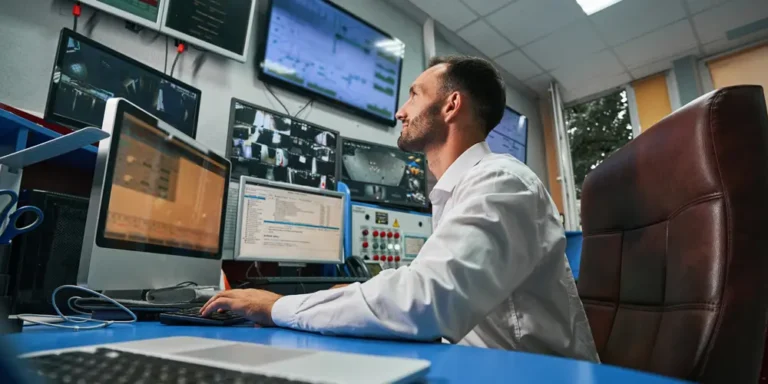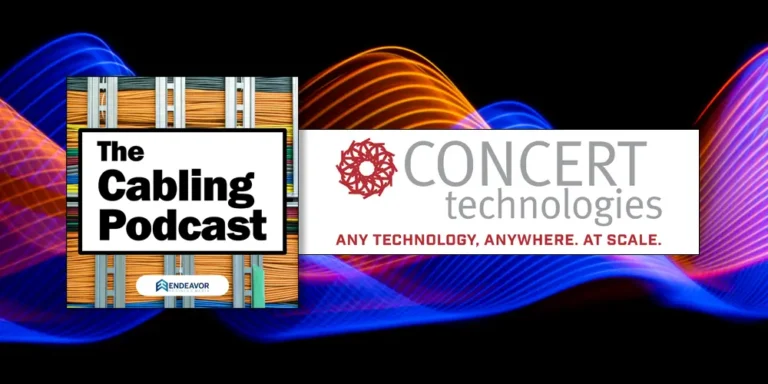In our previous article “How Can I Tell You What Communications Infrastructure I Need, When I Don’t Even Know What I Have?” we discussed the challenges faced by enterprises that own and operate large, complex communications infrastructure.
For such organizations, a lack of verified documentation makes it impossible to maintain and enhance communications infrastructure in a responsive, reliable, and cost-effective way. Instead, accumulated “Communications Infrastructure Debt” slows them down and negatively impacts the cost of operations.
Efforts to resolve this problem fail due to the excessive cost in employee resource and software, as well as a lack of the process and know-how required to complete the task. In this article, we look at a solution.
A Solution to Verify and Document Complex Communications Infrastructure
The solution is the product of a 3-year large scale infrastructure project that highlighted the need for an affordable, consistent, and scalable method to create and maintain verified, accurate records for communications infrastructure.
The project is based on a detailed audit, verification, and documentation of a large customer campus. This illustrates the depth and complexity of the issues in communications infrastructure verification, and provides a perfect environment to develop and refine methods to reliably overcome the barriers to success.
The Development Test-Bed
With 86 multi-level buildings, 4,000 backbone cables, and an outside plant (OSP) landscape of 300 manholes and hand-holes, this facility poses enormous challenges to communication, access, and data collection. The absence of a structured process for data capture, recording, and verification created obstacles that consistently blocked past efforts to build a reliable set of records.
The complexity of this site is compounded by regular demolition of buildings, erection of new structures, as well as myriad access restrictions. These make it an uphill battle for communications infrastructure survey and documentation. Success was finally achieved through a purpose-built Program framework, designed to address these issues.
Why is Verification So Hard To Do?
There is a culture of acceptance that infrastructure disorganization “comes with the territory.” This is due to the lack of a programmatic approach to verification. While other parts of the cabling industry are governed by standards, communications infrastructure verification has never received attention and so, remains an issue.
Where Survey-Document-Verify-Maintain (SDVM) efforts are made, the approach is based on leadership’s level of industry experience, knowledge of the space, or judgement, but never governed by a standard. It has been this way for so long, that many just accept the obstacles they encounter as ‘the norm’.
As a result, they don’t consider the value of a solution unless and until, something goes wrong. Overcoming such a mindset is a big part of why the industry has gone so long without a standard approach.
Barriers to Success
Many enterprises suffer the “I don’t know what I have, or where it is” syndrome. This makes everything from maintenance to expansion a challenge. Without well-maintained, verified documentation, communications infrastructure is suffers from disorganization, service disruption, and even failure.
It is difficult to execute a Program without experienced management. Leaders must not only be deeply familiar with information communications technology (ICT) spaces, they must also be a skilled project manager.
When attempting such a process alone, enterprises encounter barriers ranging from challenging to impossible. These include:
- Staffing issues (lack of dedicated personnel)
- No of process or structure (lack the expert knowledge to develop a program
- Lack of time (due to personnel having other tasks that take precedence
- Absence of employee and/or resource redundancy (not enough people to tackle the job)
- Lack of will (documentation and cycle management is not a big enough issue to invest the time and resources required).
Even when an organization overcomes these barriers, without the direction and support of an expert, the project still may not succeed. Such a project demands industry expertise and effective project management methods.
Any enterprise seeking to remove infrastructure obstacles is unlikely to have a project management team dedicated to communications infrastructure, creating a need for outside help.
Building a Programmatic Solution
A workable solution must include encompass the initial survey on through the entire lifecycle. It must also be customizable for any site it is applied to. To deliver economies of skill and scale, the program must also be manageable over a large geographic area.
These requirements run counter to the historical “set it and forget it” approach to infrastructure verification and maintenance. As a result, designing, accepting, and applying a new Program is an intimidating prospect.
Long before the close of the test-bed project, development began for a Program to incorporate lessons learned. It was important that those lessons were viewed through both project management and ICT lenses.
The result is VeriStructure, the industry’s first Infrastructure Verification as a Service (IVaaS) Program. IVaaS is designed for facilities of any size and infrastructure of any complexity. IVaaS is designed from the ground up to provide a field-proven, structured solution for infrastructure verification. In effect, IVaaS offers a standard where none previously existed.
Ongoing Maintenance
The survey, documentation, and verification phases of IVaaS collect the data needed for the final phase, setting the stage for ongoing maintenance.
IVaaS powers more effective infrastructure planning, by gathering information about design, layout, and functionality. This information is the foundation of robust maintenance processes throughout the infrastructure lifecycle.
This approach to maintenance extends the life and stability of infrastructure, and protects customer infrastructure investment. Future moves-adds-changes are recorded and maintained in the IVaaS database, ensuring data integrity.
Cross-checking and data verification is performed during every site visit to guarantee accuracy and keep the database current. Audit/monitoring processes ensures no changes go unnoticed or undocumented, guaranteeing operability.
Without IVaaS powering ongoing maintenance, a snapshot quickly becomes obsolete. To preserve and maintain data integrity, infrastructure data must reflect changes as they happen, and data must be regularly verified.
The Benefits of Verified Communications Infrastructure
IVaaS addresses the time-consuming and complex challenges of building and maintaining accurate, verified, actionable communications infrastructure documentation.
Using IVaaS, organizations can feel confidence in the integrity their network infrastructure. Paying down “Communications Infrastructure Debt” substantially lowers their risk of network failures.
IVaaS removes the risk of service interruption and network failure associated with poor infrastructure documentation. With IVaaS, infrastructure risk is defined and mitigated by an industry leader who literally “wrote the book” on how to do it.
IVaaS removes the guesswork and frustration from infrastructure documentation, by placing it in hands of experts. With IVaaS, you always know what you have and where it is. This enables effective monitoring and protection of the communications systems that keep daily operations running smoothly.




